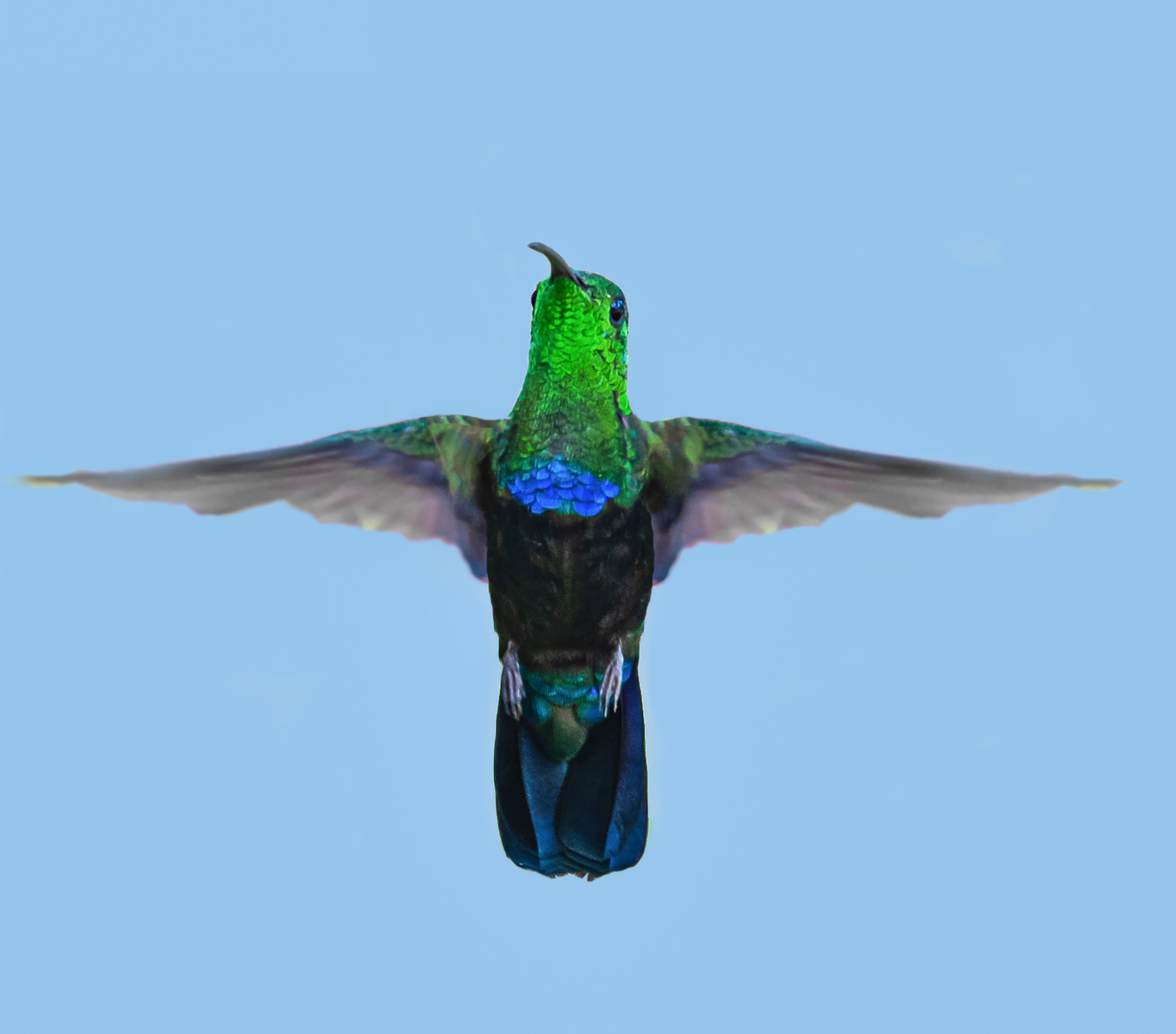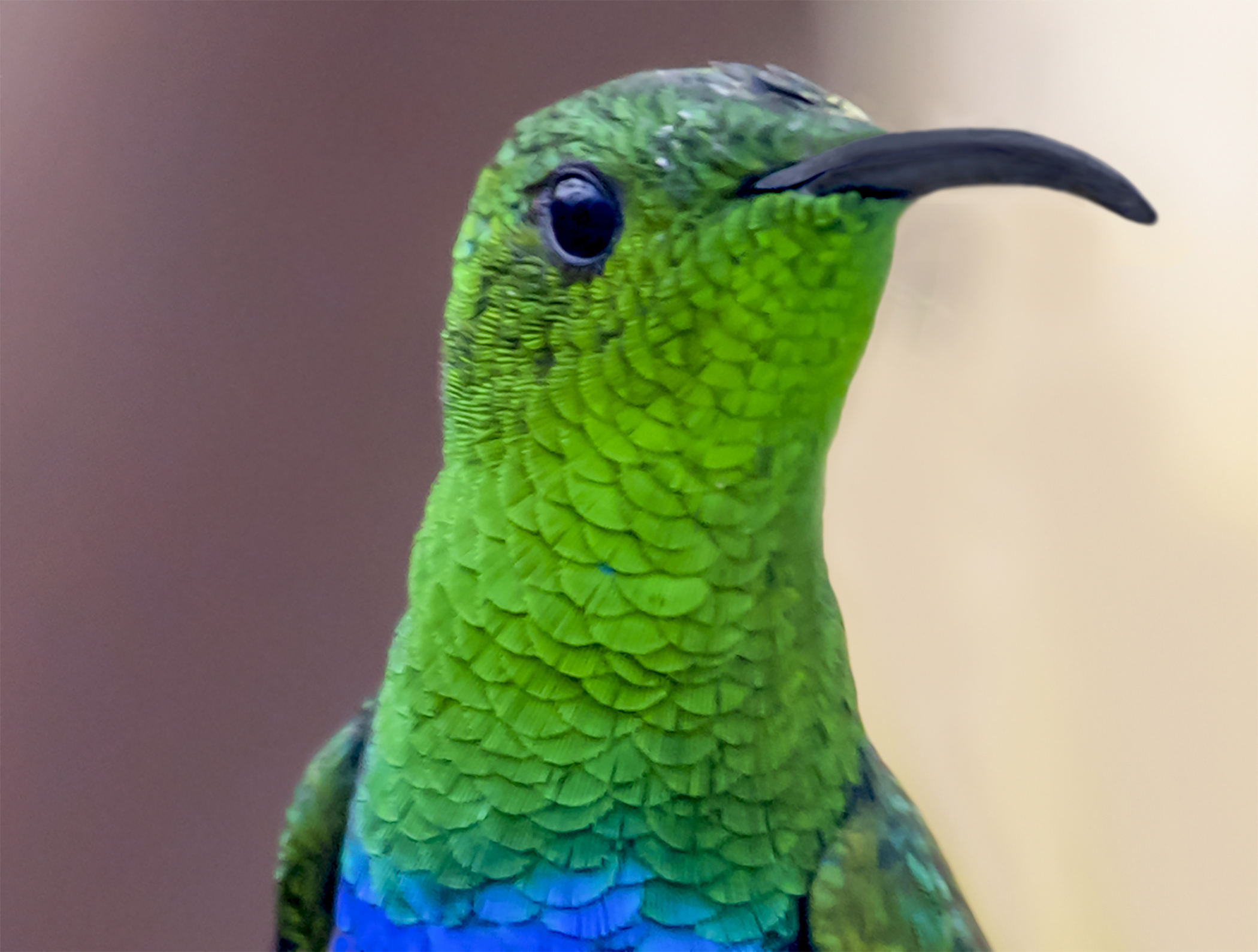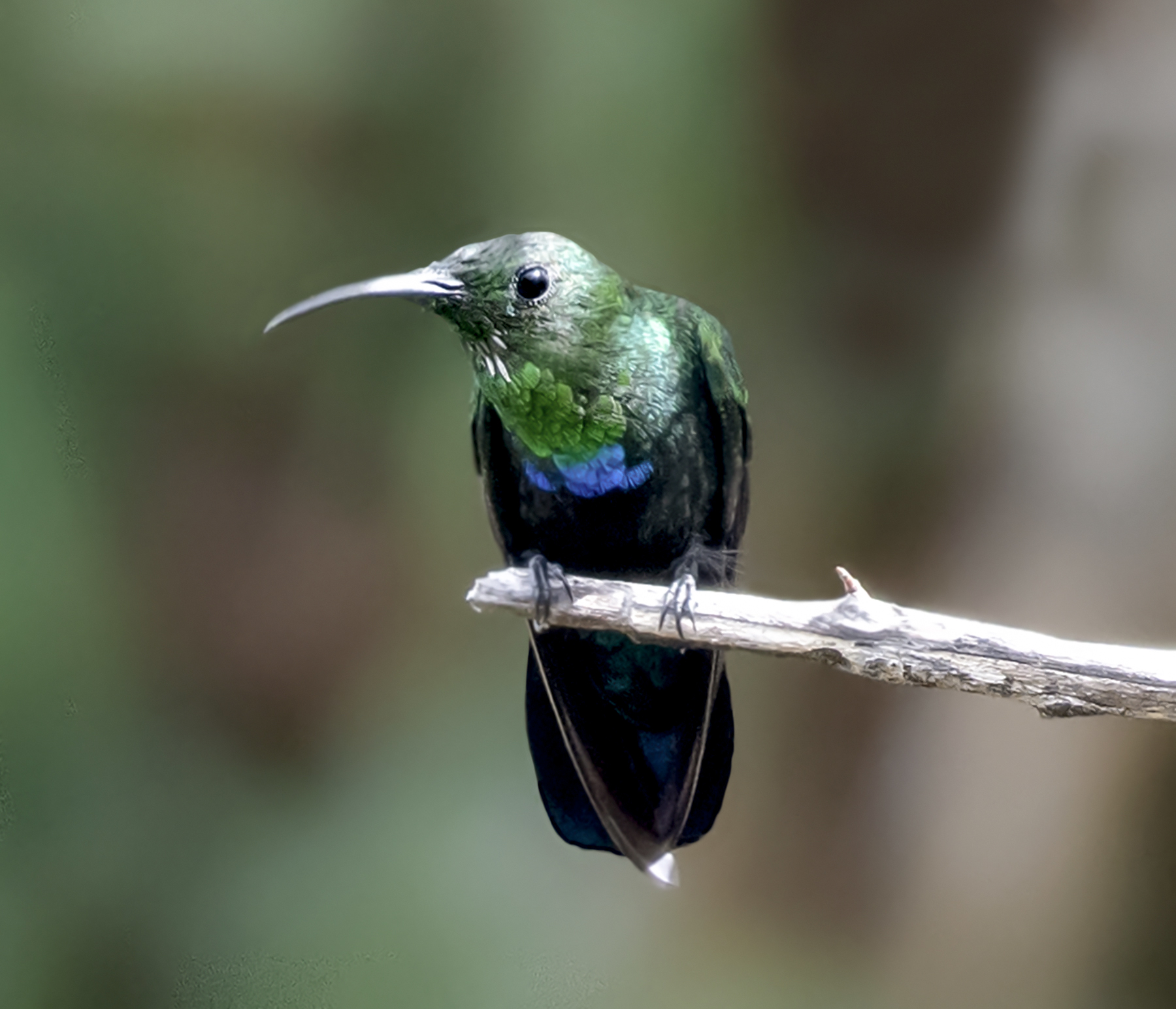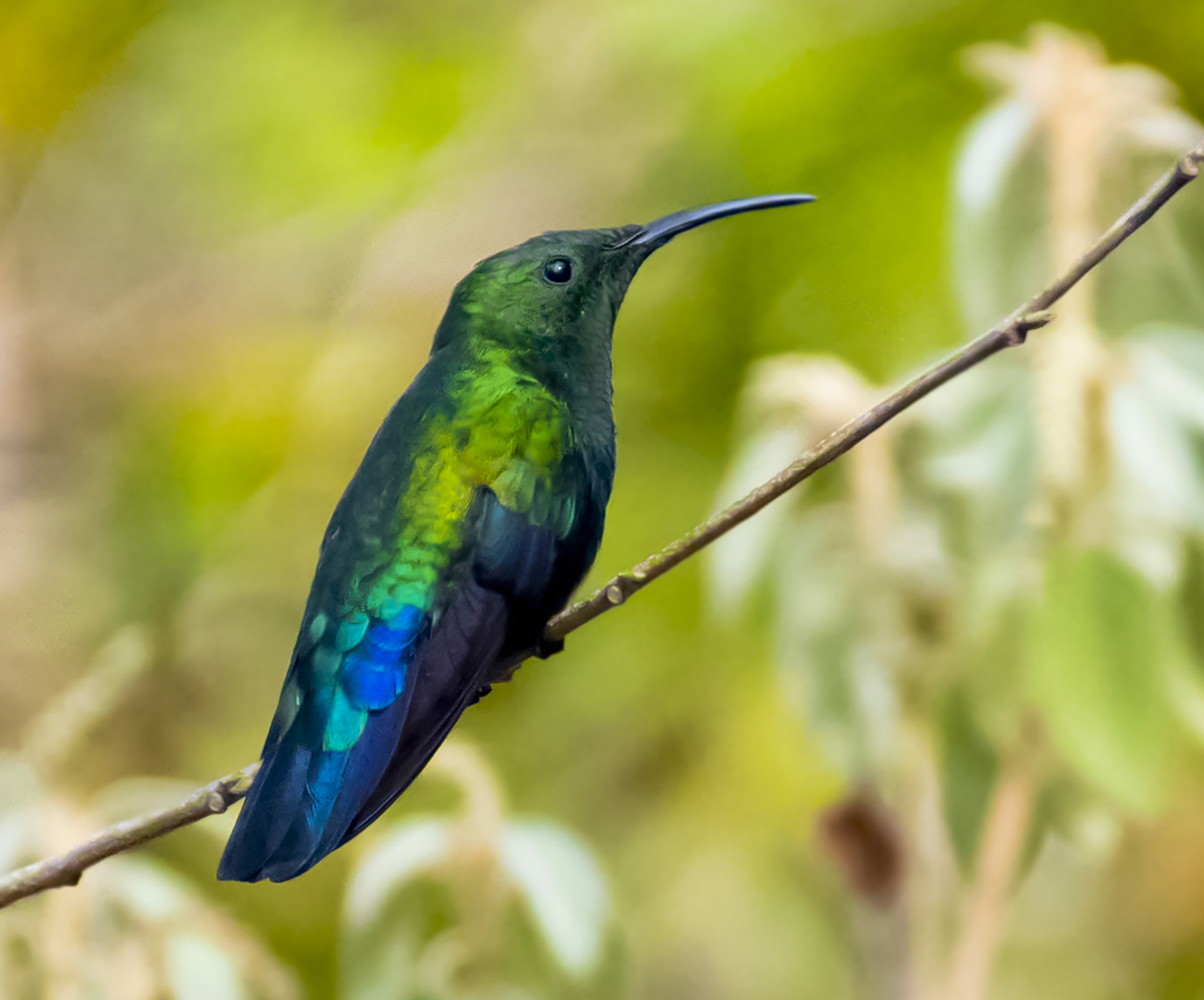
In the bright morning sunlight, local Green-throated Carib hummingbirds can seem like precious winged jewels. They look lovely to me, but I wonder what’s in it for them. I don’t imagine they are posing in the sun just for my benefit, even though I do sometimes feed them sugar water.
I read that the feathers on their throats are called its ‘gorgets,’ which was the word used in olden times for the neck protectors worn by knights in shining armor. Does a sparkling gorget actually protect the hummingbird in some way, or is there some other evolutionary advantage they get?

Up close, you can see that the feathers on the front of the hummingbird’s neck are circular and overlapping like scales. Structures within the feathers reflect and scatter the light so that when the bird moves, its feathers look quite differently in a variety of light and postures. Is it trying to get attention from a prospective mate or scare off intruders? Or just enjoying the sunshine?
In shadier situations, these hummingbirds still have their green throats with blue edging but appear duller. And most of the time, I just experience them as tiny dark shapes darting around among the flowers.

I decided I needed to find out more about how feathers get their colors in the first place and then how they sometimes appear so shiny.
Most of the colors we see are based on pigments – molecules within cells that absorb or reflect back various wavelengths of light. I learned that bird feathers, like our hair and skin, are made of keratin and have cells that produce melanin pigments at the molecular level in ‘melanosomes.’ Melanin generally shows up as color granules in the birds’ feathers and enables the feathers to absorb all the wavelengths of visible light. That doesn’t allow for much reflection and mostly creates dark colors.
In some birds, though, the melanin crystals are combined with tiny air pockets within the feathers. The result is that light is scattered as it hits the bird and creates a form of ‘structural coloration’ that causes us to see those feathers as green and blue.

I also learned that red, orange, and yellow colors don’t come from the birds’ melanosomes but from carotenoids, which are plant pigments that reflect light from the red/yellow section of the spectrum.
However, birds can’t internally produce the carotenoid compounds that create these brighter colors. To get red and yellow feathers, some birds are able to consume carotenoids in their food and then store the pigments in their feathers. They could be eating plant material containing carotenoids or eating animals that have already consumed plant carotenoids. For example, the flamingoes and scarlet ibises get some of their bright coloring from eating shrimp, which may, in turn, have been feeding on carotenoid-carrying algae.

A Scarlet Ibis is certainly bright due to its carotenoids, and its feathers do seem to have different shades depending on the light, but it does not flash sparkling color like the hummingbird.
Hummingbird feathers have a special form of structural coloration. They are able to shine so brightly because their pigment-containing melanosomes have an unusual pancake shape and also contain lots of tiny air bubbles. The bubbles are stacked in layers that create many different surfaces for light to bounce off. Taken all together, these adaptations produce shimmering iridescence when the angle of the light is right.

Why would hummingbirds go to so much trouble to develop iridescent feathers?
Theories about hummingbird iridescence often focus on its role in attracting potential mates. Interestingly, birds have four color cones in their eyes, while we only have three, so they can see a broader range of colors, including ultraviolet parts of the spectrum. That affects how they perceive flowers, which often have ultraviolet coloring we can’t see, and also probably affects how attractive they look to each other.
It could also be a protective adaptation. A bright flash of the hummingbird’s gorget could momentarily distract a predator. Or its iridescence might also serve as a form of camouflage, as the bird seems to appear and disappear by moving in and out of the light, causing confusion about its actual position.
I don’t like to think that the shiny hummingbirds I see in the yard actually view me as an intruder and are giving me a signal to get lost rather than just showing me how pretty they are.
Yet the truth is that they are quite complicated beings, and we really don’t know much about how they actually perceive us.
Gail Karlsson is an environmental lawyer, writer, and photographer. She is the author of two books about the Virgin Islands – The Wild Life in an Island House and the guidebook Learning About Trees and Plants – A Project of the Unitarian Universalist Fellowship of St. John – and has also recently published A Birds’ Guide to The Battery and New York Harbor. Follow her on Instagram @gailkarlsson and gvkarlsson.blogspot.com.





